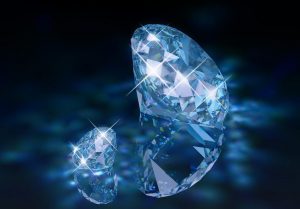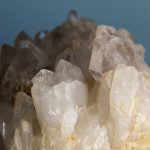Chemical Composition : Silicon Carbide – SiC
Classification / Type : This is a man made material. The term synthetic is used since it has a natural counterpart as inclusions seen in diamonds and other gemstones.
Crystal System / Forms : Hexagonal
Cuts & Uses : Facetted cuts.
Dispersion : 0.105 (high fire)
Hardness : 9.5
Lustre : Adamantine
Magnification : Strong doubling of facet edges, inclusions and culet (generally seen through kite facet), reflective needles.
Optic Character : Anisotropic, D.R.; Uniaxial Positive
Pleochroism : Weak
Refractive Index / Birefringence : 2.648 – 2.691 / 0.043
Simulants (with separation tests) : G.G.G. (dispersion, doubling, S.G.), Y.A.G. (dispersion, doubling, S.G.), Synthetic Cubic Zirconia (S.G., dispersion, doubling), Diamond (dispersion, doubling, inclusions, S.G.), Strontium Titanate (dispersion, doubling, S.G.), Sphene (dispersion, inclusions), Synthetic Rutile (S.G., dispersion), etc.
Specific Tests : Moissanite probes are available which are defined for synthetic moissanite values of thermal conduction such as moissanite thermal probe.
Spectrum : Not characteristic
Synthesis : Large crystals are grown by sublimation from a feed powder, diffusion through graphite and growth directly from the vapor phase on a seed crystal. In the sublimation process, the silicon carbide vaporizes and recrystallises without passing through the liquid stage.




























Leave a Reply
You must be logged in to post a comment.